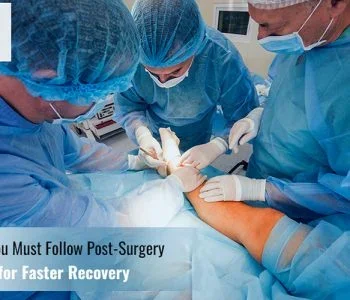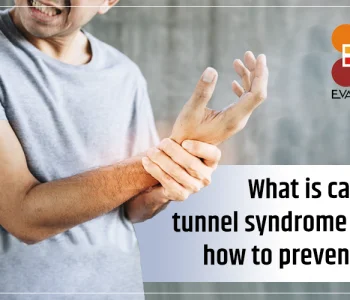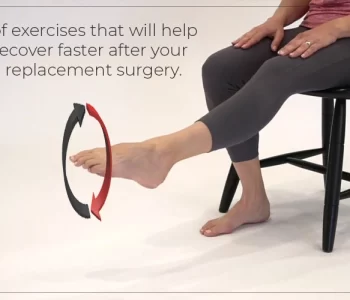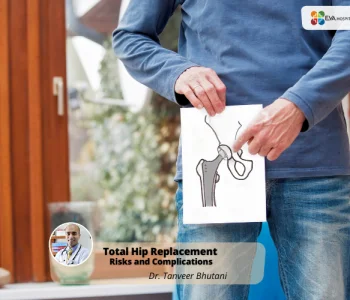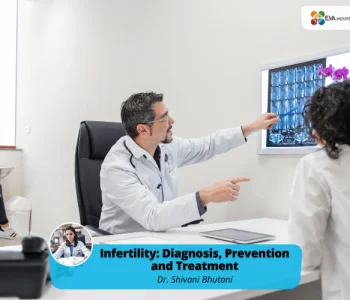What is Endometriosis and What are its types?
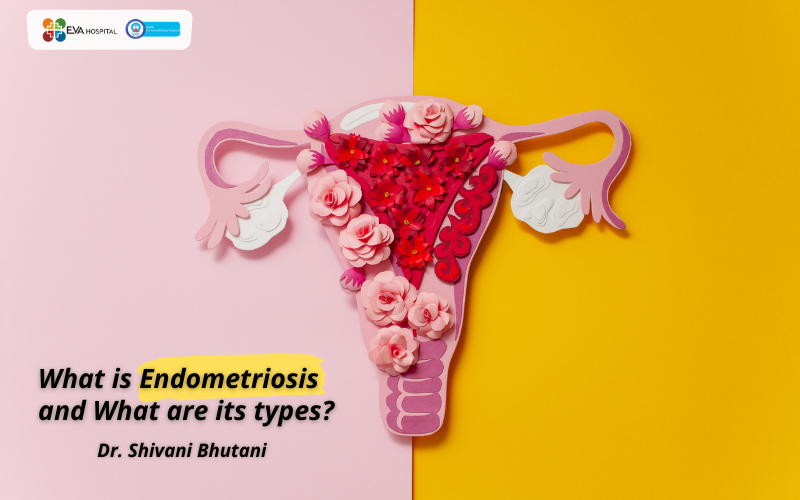 Eva Hospital
Eva Hospital
What is Endometriosis and What are its types?
What is Endometriosis
The lining of the uterus is called Endometrium. The growth of endometrial-like tissue on the ovaries, bowel, and tissues lining the pelvis is called endometriosis.
It’s unlikely for endometrial tissue to spread beyond the pelvic region, but it’s not completely impossible.
The growth of endometrial tissue outside the uterus is known as an endometrial implant.
The misplaced endometrial tissue is affected by the hormonal changes of the menstrual cycle, resulting in the area becoming inflamed and painful.
The tissue grows, thickens, and breaks down. As the tissue that has broken down has nowhere to go and becomes trapped in the pelvis.
Symptoms of Endometriosis
This trapped tissue can cause:
- Irritation, Discomfort, and Pain
- Scar formation
- Adhesions that bind pelvic organs together
- Severe pain during periods, bowel movement, and intercourse
- Fertility problems
- Fatigue, Diarrhea, Constipation, Bloating, and Nausea.
Sometimes there may be no symptoms. Thus it is important to get regular best gynecologists in Ludhiana examinations, allowing the gynecologist to monitor any changes. This becomes even more important if you have two or more symptoms.
Read more: Endometriosis and IVF
Types and Stages
Endometriosis is grouped by its stage and type, based on different things, such as the location, depth, size, and amount of tissue. The kind of endometriosis one has played a role in the symptoms and the treatment.
Stages of Endometriosis
There are different methods to determine the stage of endometriosis including the location, number, size, and depth of endometrial implants.
Points are assigned according to the spread of the endometrial tissue, its depth, and the areas of the body that are involved.
Based on the results, Endometriosis has four stages
Stage 1 or Minimal: There are a few small lesions or wounds and shallow endometrial implants on the ovary. There is almost no scar tissue. Inflammation in or around the pelvic cavity may be present.
Stage 2 or Mild: The number of implants is more than in stage 1. There are light lesions and shallow implants on the ovary and the pelvic lining, which are deeper in the tissue, and there may be some scar tissue too.
Stage 3 or Moderate: There are many deep implants on the ovary and pelvic lining. Small cysts on one or both ovaries, and thick bands of scar tissue called adhesions may also be present.
Stage 4 or Severe: This is the most widespread and severe stage of endometriosis involving deep implants and thick adhesions on the pelvic lining and ovaries. Large cysts on one or both ovaries are also present. Lesions may also be present on fallopian tubes and bowels.
There is no explanation as to why some patients have more severe cases than others. If left untreated, it can remain the same over time it may get worse or better.
Read more: Endometriosis – Symptoms, Risk Factors, and Treatment
Types of Endometriosis
Also grouped by what area of the pelvis or abdomen it affects, Endometriosis has four main types:
Superficial peritoneal endometriosis.
A thin membrane that lines the abdomen and pelvis, which covers most of the organs in these cavities
is called the peritoneum. In the least severe form, the endometrial tissue attaches to the peritoneum in this type of endometriosis.
Endometriomas
Dark, fluid-filled cysts, also called chocolate cysts which vary in size and can appear in different parts of the pelvis or abdomen are called Endometriomas. They are most common in the ovaries.
Deeply infiltrating endometriosis (DIE)
The condition where the endometrial tissue invades the organs either within or outside the pelvic cavity sometimes including the ovaries, rectum, bladder, and bowels is called Deeply infiltrating endometriosis.
Sometimes (though rarely) a lot of scar tissue can bond organs sticking them in place in a condition called the frozen pelvis.
Abdominal Wall Endometriosis
When the endometrial tissue grows on the abdominal wall or to a surgical incision, like one from a C-section, it is called Abdominal wall endometriosis.
Diagnosis of the Types and Stages
Endometriosis can be only truly diagnosed by laparoscopy. The surgeon makes a small cut and inserts a tiny, thin viewing tool through the stomach to look for signs of endometriosis.
A small tissue sample or biopsy may also be taken for testing, to help rule out other causes.
Only superficial peritoneal endometriosis can be seen by laparoscopy but other tests are needed to be done before the surgery, like a pelvic exam to feel for a cyst, an Ultrasound, or MRI to detect endometrioma.
Treatment
The treatment is usually decided based on the symptoms and whether one wishes to conceive. The doctor prescribes painkillers and hormone therapy initially.
But if these treatments don’t help, one may need surgery to remove the implants.
This can be done by laparoscopy or by abdominal surgery. For women who don’t wish to get pregnant, the uterus can be removed surgically.
Bottomline
Endometriosis can affect anyone, causing pain and infertility.
There are both medical and surgical options available to help reduce the symptoms and manage any potential complications. The doctor usually first tries conservative treatments and may then recommend surgery if your condition doesn’t improve.
Everyone may react differently to these treatment options. An experienced doctor can help you find the one that works best for you.
Dr. Shivani Bhutani’s best IVF center in Ludhiana through her experience and pragmatic approach has a high success rate of treating endometriosis especially for women wishing to have a child.
She has cured many of this disease through her line of approach to this disease. Contact for an appointment.
